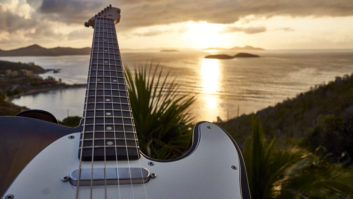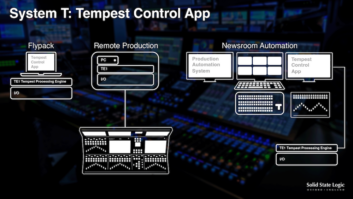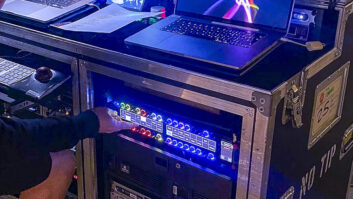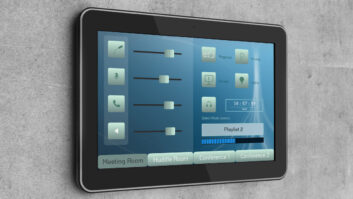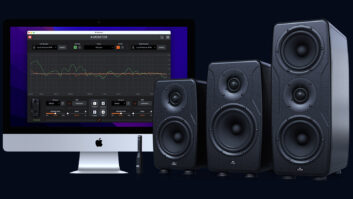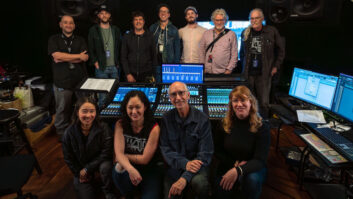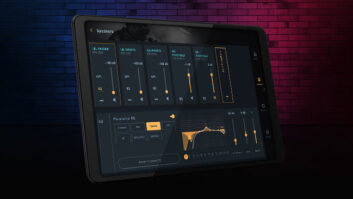The Bridge’s dual 28-inch displays and 88-key piano surface now reside at mix position, where Fort Apache South’s analog console was the former anchor.CambridgeCambridge, MA (March 24,2015)—In 2009, audio engineer and educator Owen Curtin gathered a team of former students and colleagues to relaunch Cambridge MA’s Fort Apache South— a classic recording facility in the greater Boston area—as the Bridge Sound & Stage. However, this was no mere renaming and reopening. They turned the main control room on its ear, placing an 88-key hammer- action keyboard where its analog console used to be.

“When you sit at mix position, it’s at two ultra-wide, 28-inch displays, just slightly wider than the keyboard,” begins Curtin. “When people come into the studio, they don’t find an engineer sitting in front of a mixer; they find a player sitting in front of a piano. All outboard gear, patching options and so on, are at waist level. What the client really sees is a musician at the helm. And it’s gorgeous.”
This unique design, Curtin explains, better serves the modern, DIY-minded artist. Yet the Bridge offers the best amenities of a classic commercial studio: first and foremost, a knowledgeable staff plus desirable world-class analog flavor, luring self-recording types to venture into a collaborative and creative community.
This all started, he explains, by taking a new approach to his first commercial control room. “In my first studio—with a big console and an Pro Tools HD|3 rig in a tiny mix space, around 100 square feet—I saw a real need for a monitor controller- based studio rather than a traditional, console-centric one. It had to work seamlessly with my HD system, too.”
Rather than shopping for a controller, he simply decided to build one to best meet his needs. “I thought, ‘Why not just build a monitor controller with talkback, mono summing, VU metering just like I want it?’ That was my first foray into DIY audio; it opened up my workspace and imagination. By the time I got [the controller] working, though, I’d already shut down that space and moved to a bigger studio where actually we needed a console. But that experience stuck with me and reemerged here at the Bridge.”
While a traditional console was definitely “out” for the main studio at the Bridge, so were all the “standard” controllers, too. “I don’t really see the need for 24-fader boards, as you can’t touch all 24 faders,” tells Curtin. “And I also don’t want to learn all new key commands. You inevitably walk away from that controller and then you’re home on the laptop, on the road, or at another studio trying to learn that layout. Day in and day out, [a traditional controller] didn’t make sense.”
Curtin ultimately settled upon audio designer Colin Broad’s TMC-1 TFT Remote Control for XMon (colinbroad.com), “the analog end of the Avid Icon and D-Command Series,” he explains. “Three months ago, Colin released a prototype and I was his first sale. I’m really happy with it. It has two listen-back mics, two talkback mics, and playback for the studio loudspeaker system, all controlled by a 4- x 6-inch box with a big volume knob with custom switching and LED feedback.”
Feeding the main studio’s 56 channels of Pro Tools are 40 boutique preamps and a subsequent 40 boutique EQs. “When you plug into the snake, you’re normalled through that chain,” Curtin explains. “You can patch anything, but there’s a normal pass through. Besides these custom paths, there is incredible room for expansion.”
Curtin and his core team—co-owner, chief engineer and producer Janos Fulop and house engineer and studio manager Alex Allinson—utilized the extensive square footage of the former Fort Apache South to build out a B room, which has already proven to be a wise move. “When we first moved in, the live space was tremendously huge,” recalls Curtin. “We had one control room and massive live space, which we divided to make a second control room and kept a third of that for a lounge. Our small B room is a great ‘feeder’ room. It’s provided a low budget way to work here—$35 an hour, which is the same as most basement studios, except here, someone is backing up your files, someone is answering the phone, you can pay with a credit card, etc., and you’re working with professional engineers in a professionally maintained space. It’s brought in clients that can’t afford the big room, but that extra traffic has driven more clients to our big room as they see the potential for making an even better record. It’s been great for business and was perhaps the most important improvement we made.”
The Bridge Sound & Stage
thebridgesoundstage.com
